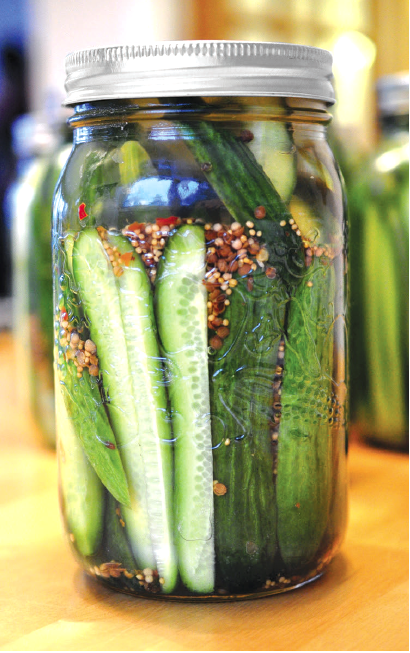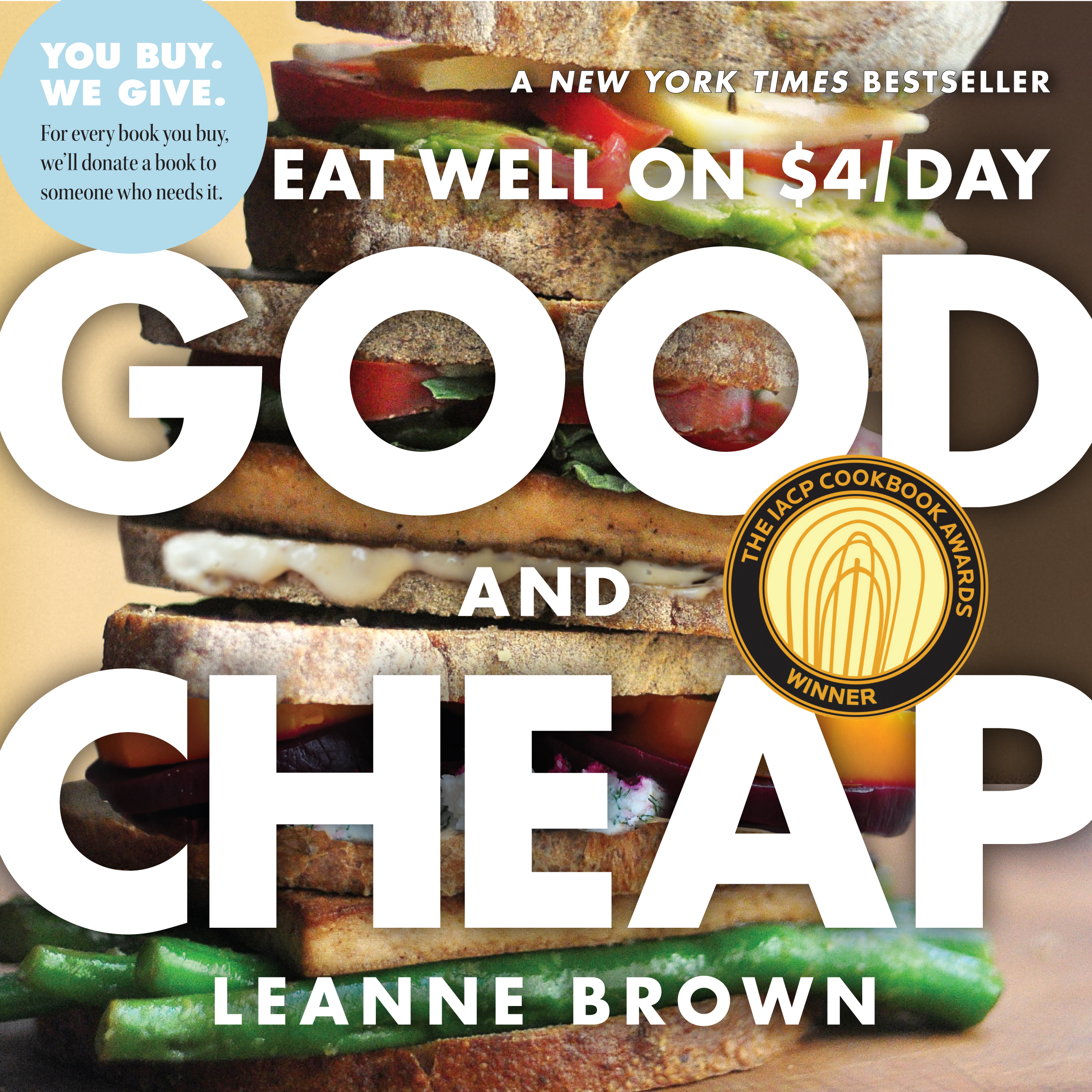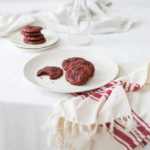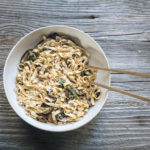Recipe excerpted from Leanne Brown’s Good and Cheap
While cucumbers are undeniably America’s favorite kind of pickle, pickling works equally as well for carrots, beets, asparagus, onions, and cauliflower. Once you’ve made these quick pickles at home, you may never go back to the store-bought variety again!
 Essentials
Essentials
essentials
vegetables (cucumbers, zucchini,
cauliflower, carrots, beets,
asparagus, onions, peppers, or
string beans)
1-quart mason jars (see box)
Additions to the Jar
sprigs of dill
garlic cloves, quartered
Brine
1 cup distilled white vinegar
1 cup water
1 tablespoon salt
1 teaspoon mustard seeds
1 teaspoon dill seeds
1 bay leaf
additions to
Additions to the Brine
1 or 2 dried chiles, crushed
cinnamon stick
2 whole cloves
½ teaspoon coriander seeds
½ teaspoon allspice berries
½ teaspoon fennel seeds
½ teaspoon celery seeds
1 tablespoon sugar
Multiple this Recipe by the number of quarts of brine you want to end up with. The quantities below are a ratio—they will make roughly enough brine to fill a 1 quart mason jar (depending on how tightly packed it is with vegetables). You can adjust the ratio accordingly to how many vegetables you have an how many jars you want to fill. I suggest making at least 6 quarts at once if you have the space in the fridge. It’s more efficient to make a large batch and, trust me, they will be popular.
- Cut up the vegetables however you like. Smaller pieces will pickle faster because the brine takes less time to penetrate them. I generally go with bite-size pieces, or long strips if making cucumber pickles. You can also add any other vegetables or herbs for flavor.
- Fill the jars with the vegetables.
- Make the brine: pour the vinegar, water, and salt into a pot. Put in any other additions. If you don’t maintain a spice collection, you can buy pickling mix in the spice aisle of most grocery stores. Instead of the seeds and bay leaf, add 1 tablespoon of pickling mix to the water, vinegar, and salt. And for sweet pickles, add about 1 tablespoon of sugar.
- Bring the brine to a boil and turn the heat down to low. Simmer for 10 minutes.
- Pour the hot liquid over the vegetables in the jars. If you don’t have enough, don’t panic. Simply make more using the ration in the brine ingredients list. If you’ve run our of spices, just skip them.
- Place the lids over the jars. Don’t screw them on tightly until the jars have come to room temperature. Once the jars have cooled completely, screw on the lids and put the jars in the fridge.
- Leave the pickles for 2 weeks to let the brine do its work. After 2 weeks, eat them!
Ideally, you’ll have glass jars with tight-fitting screw-top lids. You can usually find jars for canning at hardware stores or many grocery stores, but another kind of glass jar or an old pickle jar will do in a pinch. Mason jars can be used over and over and I use them to house things like dried beans and grains, so they are very useful and inexpensive storage.
For more recipes check out the book!
 About the Book:
About the Book:
By showing that kitchen skill, and not budget, is the key to great food, Good and Cheap will help you eat well—really well—on the strictest of budgets.
Created for people who have to watch every dollar—but particularly those living on the U.S. food stamp allotment of $4.00 a day—Good and Cheap is a cookbook filled with delicious, healthful recipes backed by ideas that will make everyone who uses it a better cook. From Spicy Pulled Pork to Barley Risotto with Peas, and from Chorizo and White Bean Ragù to Vegetable Jambalaya, the more than 100 recipes maximize every ingredient and teach economical cooking methods. There are recipes for breakfasts, soups and salads, lunches, snacks, big batch meals—and even desserts, like crispy, gooey Caramelized Bananas. Plus there are tips on shopping smartly and the minimal equipment needed to cook successfully.
Buy the Book
Amazon | B&N | Indiebound | Workman





2 Comments
Billy
March 26, 2018 at 6:08 pmThank you so much for sharing your pickling recipe! I love pickling and it is such a great way to add a flavor that is sort of unreachable under any other method. Can’t wait to try this recipe at home!
John Fung
September 5, 2018 at 9:04 pmI love pickles but never thought about making them myself. Thanks for the recipe, I’m going to try! While there is a two week minimum, is there an optimal or maximum time where cucumber pickles should be eaten by?